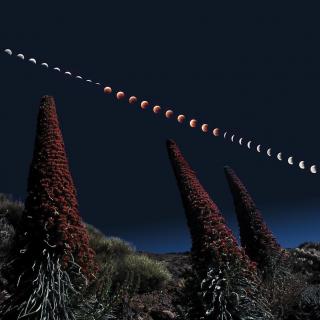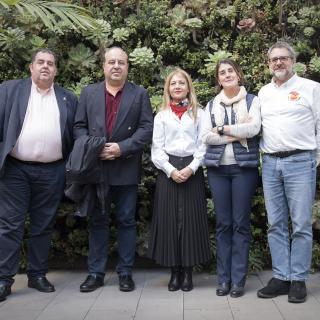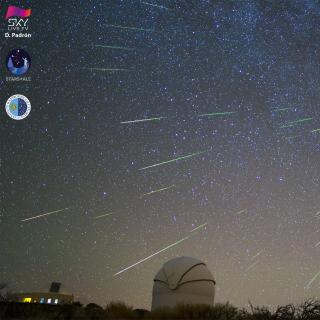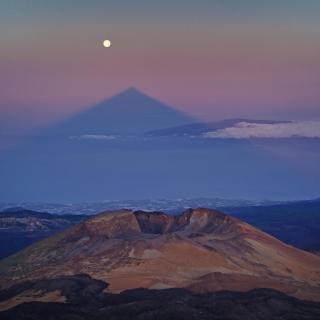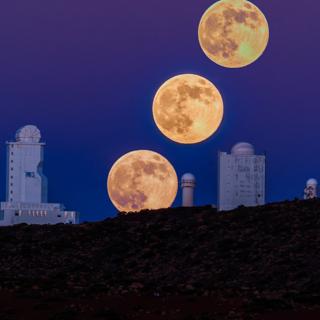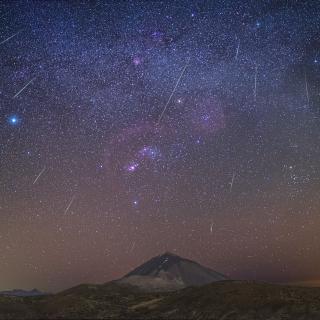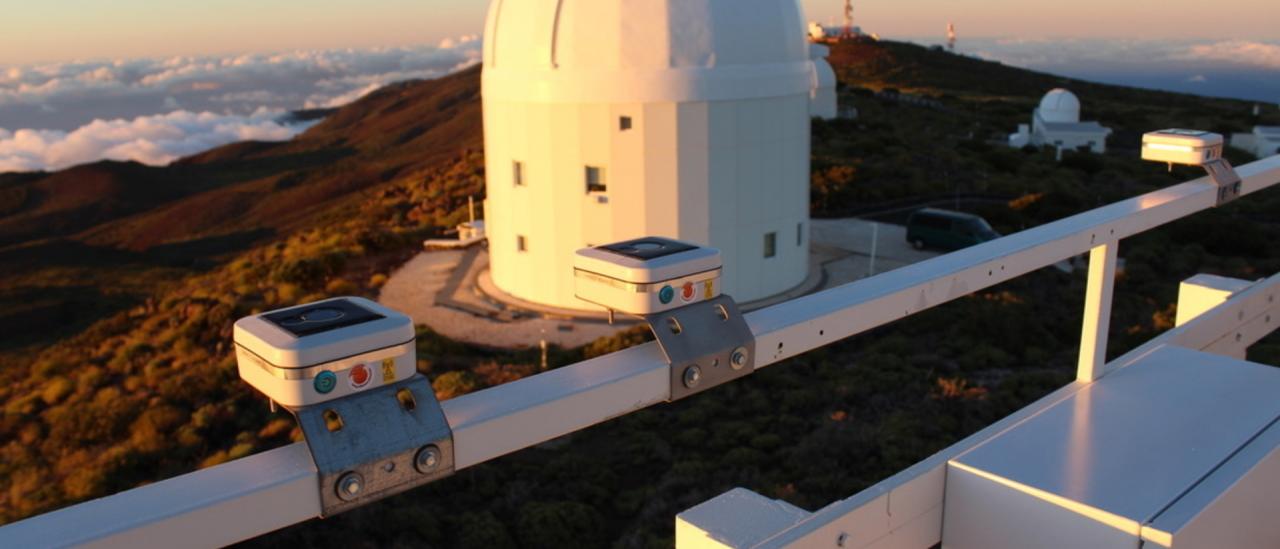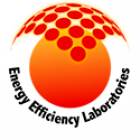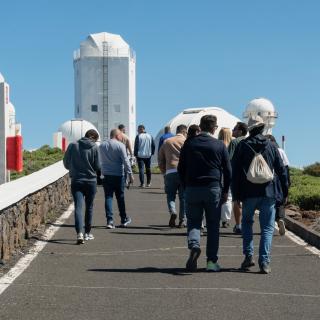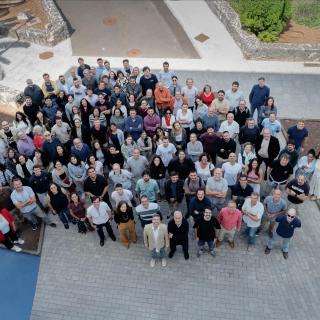After several months of waiting, this summer the EELabs project, led by the Instituto de Astrofísica de Canarias, has started to deploy its first network of photometers. Tenerife and La Palma have now received the first measuring instruments of night-time darkness, and in Gran Canaria work has started in the selection of the sites at which these small instruments will be placed.
Light pollution is not only a problema for astronomy. The loss of darkness due to Artificial Light at Night (ALAN) has a dangerous effect on natural ecosystems, and the project EELabs will not only quantify this, but will also suggest methods to solve it.
“The main aims of EELabs are to measure the light pollution affecting the protected natural ecosystems of Macaronesia (the Atlantic islands) using light pollution test laboratories, to develop at least four experiments on light pollution with the objective of finding out how artificial night lighting propagates, and to implicate the younger people in the search for solutions to this problema, as well as increasing the legislation in the municipalities participating in the project in order to protect the ecosystems at night” explains Miquel Serra-Ricart, an astronomer at the IAC and coordinator of the project.
EELabs, which is being developed under the programme Interreg MAC 2014-2020 will measure the darkness of the nights in at least five islands in Macaronesia, using apparatus which runs on its own, and causes no damage: photometers. The installation of these sensors started in July in the municipality of Güímar (Tenerife) with the collaboration of the Town Council, and at the Roque de los Muchachos Observatory (Garafía, La Palma), and in the region around the Caldera de Taburiente, via the project La Palma Smart Island, promoted y the Cabildo Insular (Island government) of La Palma. During August part of the project team visited Gran Canaria to meet with the Mayor of Tejeda, the municipality in which the fifth light pollution laboratory (the third in the Canaries) will be installed.

The project entails significant technological development. Because its aim is to measure the impact of light pollution in remote sites the Canary R+D+I company SIELTEC Canarias has been given the job of designing and building the SG-WAS (SkyGlow Wireless Autonomous Sensor) photometers, starting from the development attained by the TESS photometers in the European project STARS4ALL These systems, each barely 10 cm in size, will enable the project to produce maps of night-time darkness which cover the natural protected areas of the Natura 2000 network in the islands. To produce a signal and receive the data emitted by the photometers the Institute of Technology and Renewable Energies (ITER) will develop another key piece of equipment for the project, and MiNiO (Meteo Nano Observatory) controller which is completely self-running, ideal to provide cover in places where access is difficult.
A team at the University of Las Palma de Gran Canaria will produce the maps of night-time darkness. These will offer an explanation of how the lighting propagates through the atmosphere, and will generate models of light pollution or LAN (Artificial Night Lighting) which will enable the researchers to evaluate the impact of the LAN on the most threatened group of birds, in the world: the sea birds.
How will EELabs help to protect birds?
Light pollution, LAN, is one of the main threats to the population of sea birds in Macaronesia. In particular, for the young of the shearwaters and painhos, as explained by the Portuguese Society for the Study of Birds (SPEA), another organization which is working with EELabs to minimize the impact of artificial night illumination on the natural protected areas of Macaronesia. When these birds leave the nest they are disoriented, and this can mean that they bump into things, or are run over, and become the victims of dogs and cats, or even die of dehydration. For this reason those at SPEA they remind us that the use of adequate street lighting which takes into account energy efficiency but also the impact on biodiversity, is essential. To satisfy these requirements it is extremely important to evaluate the impact on nature using test equipment for light pollution, and to pass specific laws against light pollution to reduce the threat to a minimum.
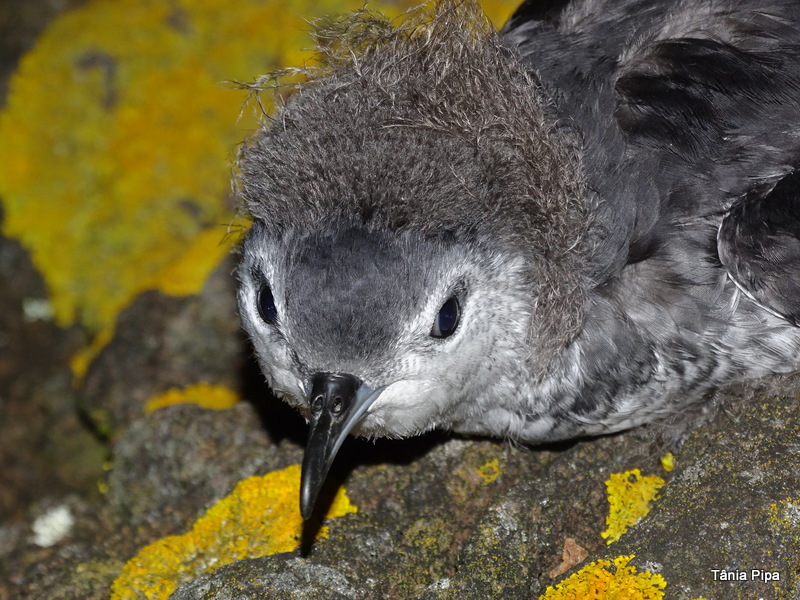
The preparation of municipal regulations is one of the objectives of the EELabs project which could offer instructions about the orientation of street lights (always pointing downwards) without glass to avoid the scattering of the light, and with timers to reduce the intensity in the periods when the birds come out. There will also be a proposal to prefer the use of warm coloured lighting, preferably yellow or amber, (colour temperature less than 3000K, to install filters, and even to turn out the lights during periods of special sensitivity for the birds in the most critical zones.
The photometers of the EELabs project will also permit the evaluation of the impact of light pollution on the population of adult sea birds. It will allow us to understand if this type of pollution affects the adult population of cinderella shearwaters, (the most numerous shearwater which nests in Macaronesia) during the nesting period, and above all during the phase of feeding the young, when they visit the nesting grounds most frequently. It should be possible to measure whether these visits are affected by public lighting, which has not been tested until now.
For the Macaronesian sea birds light pollution may well be the easiest threat to reduce, for a group of birds among those most threatened in the world, and which are characteristic of this untouched region. The work of diffusion and increasing sensitivity of the EELabs project will increase the knowledge of the sea bird species in Macaronesia, and of the light pollution, and will help find the best solutions to mitigate this threat, in answer to the Directive on Birds, the Framework Directive on Marine Strategy, and the Strategy of Mitigation of Light Pollution in Macaronesia (in preparation). All of this, putting into practice the aims defined in the project, and working together with all interested parties, from regional and local governments to action groups.
These are only the first steps in a project which, during the next three years, aims to raise awareness of the problem of light pollution, and to show that it is possible to minimize its impact on nature, taking the fullest advantage of new lighting technology.
EELabs (eelabs.eu) is a project funded by the Programme INTERREG V-A MAC 2014-2020, cofinanced by FEDER (European Fund for Regional Development) of the European Union, under contract number MAC2/4.6d/238. Five centres in Macaronesia (IAC, ITER, ULPGC, SPEA-Azores and SPEA-Madeira) work in EELabs. The objective of EELabs is to build laboratories to measure the energy efficiency of the artificial night lighting in protected natural areas in Macaronesia (the Canaires, Madeira, and the Azores).
Contact: arueda [at] iac.es (arueda[at]iac[dot]es)
Interesting links:
EELabs: https://www.eelabs.eu/es/home/
Sociedade Portuguesa para o Estudo das Aves (SPEA): https://www.spea.pt/
Universidad de las Palmas de Gran Canaria (ULPGC): https://www.ulpgc.es/
Instituto Tecnológico y de Energías Renovables (ITER): https://www.iter.es/
Consejería de Nuevas Tecnologías. Cabildo Insular de La Palma: https://bit.ly/32hV8xP
La Palma Smart Island: http://www.lapalmasmartisland.es/
Ayuntamiento de Güímar: http://guimar.es/
Ayuntamiento de Tejeda: http://tejeda.eu/

